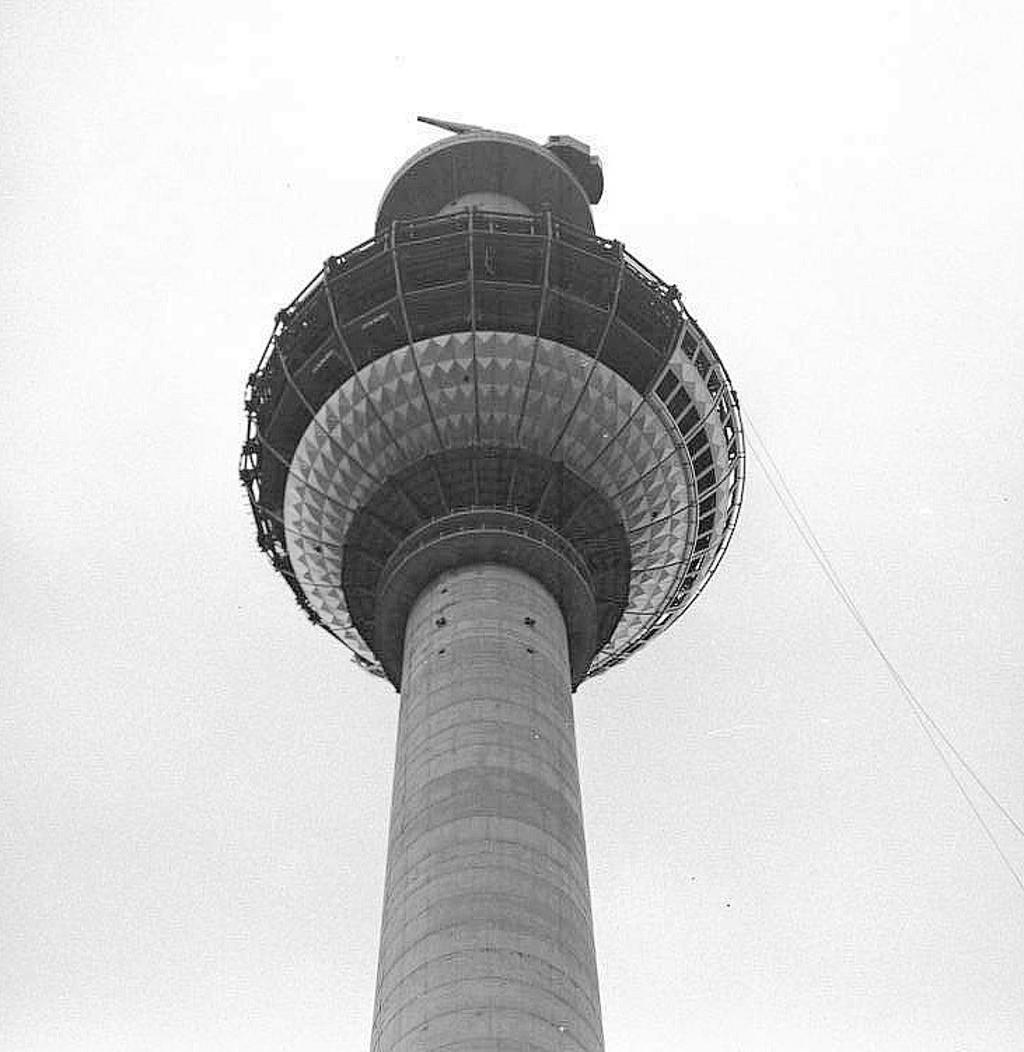About Berliner Fernsehturm
The Fernsehturm Berlin, with its gleaming sphere perched atop a slender concrete spire, dominates the skyline as one of the most recognizable landmarks in the city. Rising to a height of 368 meters, it is the tallest structure in Germany, offering panoramic views that stretch across the vibrant tapestry of Berlin. The tower’s design, a striking example of 1960s modernist architecture, features a distinctive sphere that houses a revolving restaurant and observation deck, inviting visitors to experience the city from a unique vantage point.
Constructed between 1965 and 1969 by the government of the German Democratic Republic, the Fernsehturm was intended as a symbol of communist power and technological prowess. Its location in the heart of East Berlin was strategic, meant to broadcast the strength and modernity of the socialist state. Today, it stands as a testament to Berlin’s complex history, bridging the past and present as it continues to be a focal point for both locals and tourists.
Right Where It Began
The Fernsehturm’s construction was a bold statement during the Cold War, designed to showcase the achievements of East Germany. Its completion marked a significant moment in the city’s history, as it became a symbol of the division between East and West Berlin. The tower’s presence was a constant reminder of the ideological divide, yet it also served as a beacon of hope for a future unified city. Today, it stands in a reunified Berlin, a symbol of the city’s resilience and transformation.
Plan your perfect trip to Berlin with Travo! Download now and start exploring.
Marks of Time
The architectural style of the Fernsehturm reflects the era of its creation, with its sleek, futuristic design embodying the optimism and ambition of the 1960s. The sphere, clad in stainless steel panels, glistens in the sunlight, while the slender shaft tapers elegantly towards the sky. This design not only served a practical purpose, housing television and radio transmitters, but also represented the forward-thinking vision of the time. The tower’s enduring presence in Berlin’s skyline is a testament to its lasting impact on the city’s architectural landscape.
Stories in Stone and Steel
The Fernsehturm is more than just a feat of engineering; it is a structure imbued with stories of the people who built it and the era it represents. The tower was constructed using innovative techniques for its time, with workers laboring tirelessly to complete the project in just four years. The sphere, a marvel of engineering, was assembled on the ground and then hoisted into place, a process that captivated the city. Each element of the tower tells a story of determination and ingenuity, reflecting the spirit of the people who brought it to life.
Details That Speak
Notice the intricate design of the sphere, with its 147 stainless steel panels creating a seamless, reflective surface. This design not only enhances the tower’s aesthetic appeal but also serves a functional purpose, protecting the structure from the elements. The observation deck, located within the sphere, offers a 360-degree view of Berlin, allowing visitors to see the city’s landmarks from a new perspective. The revolving restaurant, Telecafé, completes a full rotation every 30 minutes, providing diners with an ever-changing view of the cityscape.
Living History
Today, the Fernsehturm is a vibrant part of Berlin’s cultural and social life. It attracts over a million visitors each year, who come to experience the breathtaking views and enjoy the unique dining experience. The tower has become a symbol of Berlin’s dynamic spirit, representing the city’s ability to adapt and thrive in the face of change. As a site of historical significance and contemporary relevance, the Fernsehturm continues to be a place where history and modernity intersect, offering a glimpse into the past while looking towards the future.



Map loading...
Location
1a Panoramastraße, 10178, Berlin
